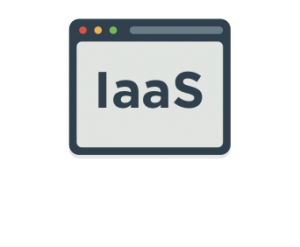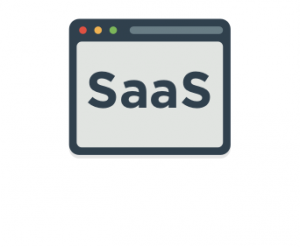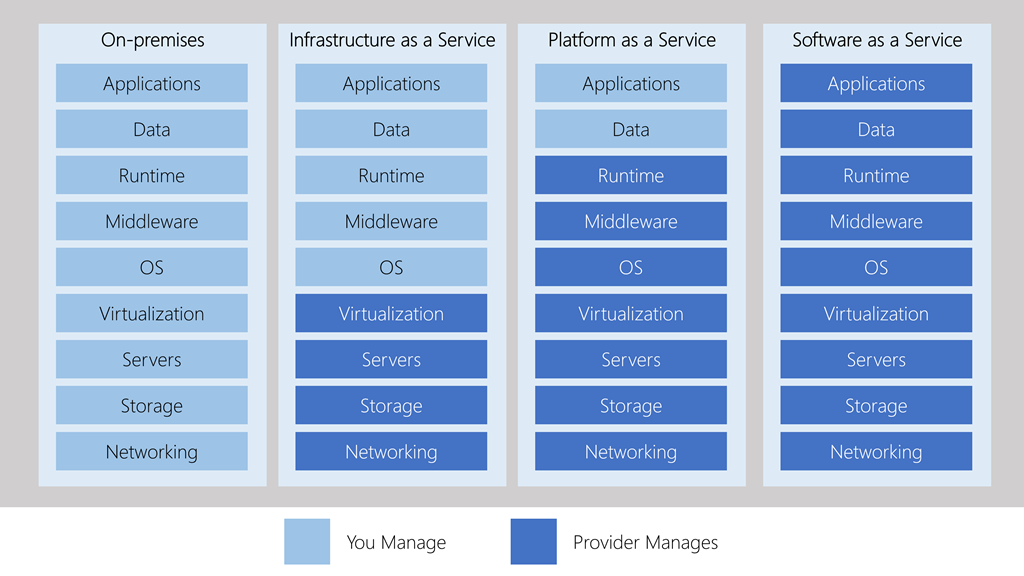Types of cloud services
When talking about cloud computing, there are three major categories. It’s important to understand them because they are used in conversation, documentation, and training.
Explore the three categories of cloud computing
IaaS vs SaaS vs PaaS
 Infrastructure as a service (IaaS)
Infrastructure as a service (IaaS)
Infrastructure as a Service is the most flexible category of cloud services. It aims to give you complete control over the hardware that runs your application (IT infrastructure servers and virtual machines (VMs), storage, networks, and operating systems). Instead of buying hardware, with IaaS, you rent it. It’s an instant computing infrastructure, provisioned and managed over the internet.
IaaS is commonly used in the following scenarios:
- Migrating workloads. Typically, IaaS facilities are managed in a similar way as on-premises infrastructure and provide an easy migration path for moving existing applications to the cloud.
- Test and development. Teams can quickly set up and dismantle test and development environments, bringing new applications to market faster. IaaS makes scaling development and testing environments, fast and economical.
- Storage, backup, and recovery. Organizations avoid the capital outlay and complexity of storage management, which typically requires skilled staff to manage data and meet legal and compliance requirements. IaaS is useful for managing unpredictable demand and steadily growing storage needs. IaaS can also simplify the planning and management of backup and recovery systems.
 Platform as a service (PaaS)
Platform as a service (PaaS)
PaaS provides an environment for building, testing, and deploying software applications. The goal of PaaS is to help you create an application quickly without managing the underlying infrastructure. For example, when deploying a web application using PaaS, you don’t have to install an operating system, web server, or even system updates.
PaaS is a complete development and deployment environment in the cloud, with resources that enable organizations to deliver everything from simple cloud-based apps to sophisticated cloud-enabled enterprise applications. Resources are purchased from a cloud service provider on a pay-as-you-go basis and accessed over a secure Internet connection.
PaaS is commonly used in the following scenarios:
- Development framework. PaaS provides a framework that developers can build upon to develop or customize cloud-based applications. Just like Microsoft Excel macro, PaaS lets developers create applications using built-in software components. Cloud features such as scalability, high-availability, and multi-tenant capability are included, reducing the amount of coding that developers must do.
- Analytics or business intelligence. Tools provided as a service with PaaS allow organizations to analyze and mine their data. They can find insights and patterns, and predict outcomes to improve business decisions such as forecasting, product design, and investment returns.
 Software as a service (SaaS)
Software as a service (SaaS)
SaaS is software that is centrally hosted and managed for the end customer. It is usually based on an architecture where one version of the application is used for all customers, and licensed through a monthly or annual subscription. Office 365, Skype, and Dynamics CRM Online are perfect examples of SaaS software.
Management responsibilities
One thing to understand is that these categories are layers on top of each other. For example, PaaS adds a layer on top of IaaS by providing a level of abstraction. The abstraction has the benefit of hiding the details that you may not care about, so that you can get to coding quicker. However, one aspect of the abstraction is that you have less control over the underlying hardware. The following illustration shows a list of resources that you manage and that your service provider manages in each cloud service category.

- IaaS requires the most user management of all the cloud services. The user is responsible for managing the operating systems, data, and applications.
- PaaS requires less user management. The cloud provider manages the operating systems, and the user is responsible for the applications and data they run and store.
- SaaS requires the least amount of management. The cloud provider is responsible for managing everything, and the end user just uses the software.
Combine cloud services to fit your needs
IaaS, PaaS, and SaaS each contain different levels of managed services. You may easily use a combination of these types of infrastructure. You could use Office 365 on your company’s computers (SaaS), and in Azure, you could host your VMs (IaaS) and use Azure SQL Database (PaaS) to store your data. With the cloud’s flexibility, you can use any combination that provides you with the maximum result.